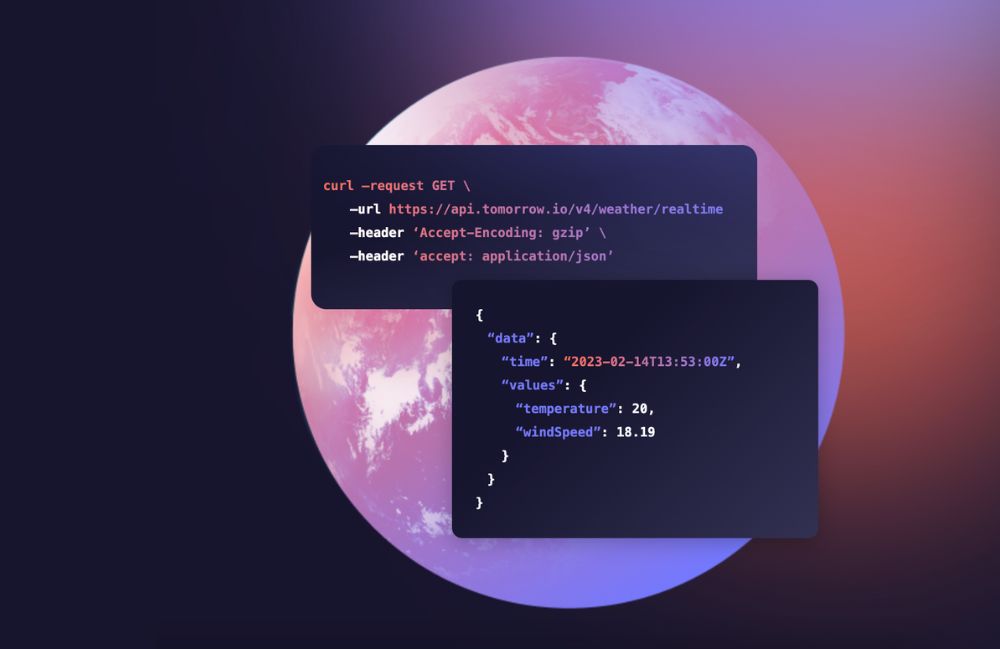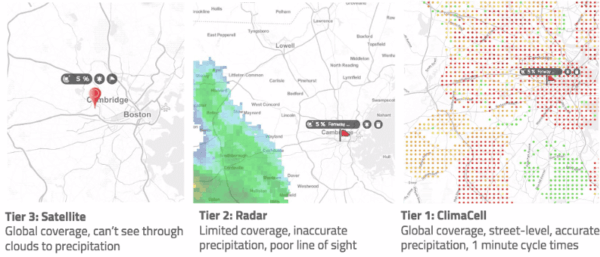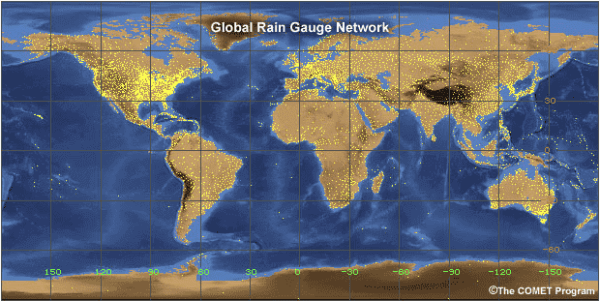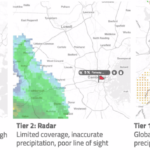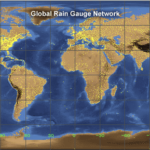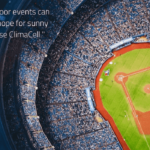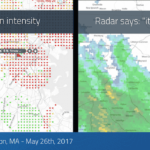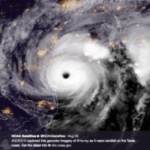TL;DR:
- Governments worldwide face weather challenges, but with the use of a weather API, they can proactively manage resources and enhance public safety.
- Weather data from agencies like NOAA is crucial for generating forecasts and specialized information for various sectors.
- Weather APIs can transform public safety operations by providing real-time weather information for emergency response, urban planning, defense operations, and environmental protection.
- When implementing a weather API, consider features, pricing, RPS, and documentation quality.
- Tomorrow.io Weather API offers comprehensive weather data fields, monitoring and alert customization, and dynamic route mapping for effective government use.
The Weather Challenge in Government
Governments face a common problem worldwide.
The weather.
Luckily, with innovative technology and the launch of the world’s first commercially built radar-equipped satellites, there is something we can do about it.
Whether it’s notifying employees of incoming weather, deploying teams for snow removal, or pausing all operations due to an incoming lightning strike, weather data can help any government organization prevent significant disruptions and enhance public safety.
Imagine being able to manage resources and respond to weather events with precision in a proactive way.
That’s the power of a weather API for governments.
If you’re unsure what an API could do for different areas of government, keep reading to find out just how powerful a weather API can be.
What is the State of Public Weather for Governments?
So how do we access this weather data?
Weather data availability for governments is robust and comprehensive, with agencies like NOAA playing a crucial role in collecting and disseminating vast amounts of weather and climate information.
NOAA collects over 3.5 billion weather observations daily, providing a wealth of data that forms the backbone of public weather services. This data is used to generate a wide range of products, including short-term forecasts, long-term climate projections, and specialized information for sectors like aviation and agriculture.
As new technology has emerged, new players in the weatherspace has built products specifically designed for government operations.
How Does Weather Impact Public Safety?
Did you know that the United States has sustained 391 weather and climate disasters since 1980, with overall damages/costs reaching or exceeding $1 billion?
The total cost of these 391 events exceeds $2.755 trillion.
Weather’s influence on public safety is profound and far-reaching. These storms have caused devastating damages to infrastructure, communities, and the general public.
From sudden storms that threaten lives to heatwaves that stress infrastructure, Mother Nature’s impact is brutal.
- Flash floods can trap motorists and cause swift water rescues.
- Extreme heat leads to heat exhaustion and strains power grids.
- Icy roads increase accident rates and slow emergency response times.
- Severe storms down power lines, creating electrocution hazards.
- Heavy snowfall can isolate communities and disrupt supply chains.
Often, emergency responders race against time during floods while city planners grapple with long-term climate shifts. But what if we could harness weather data to stay one step ahead?
This is where a weather API comes in.
Organizations can make smarter, faster decisions by integrating real-time weather information into existing platforms.
Imagine traffic lights adjusting for icy roads or emergency alerts targeting specific at-risk areas.
With an API, weather intelligence becomes a seamless part of public safety operations, transforming reactive measures into proactive strategies.
It’s not just about predicting the weather – it’s about protecting lives.
Understanding Weather APIs: What You Should Know
What is a Weather API for the Government?
A weather API allows organizations to access and integrate weather data from various providers into their applications and websites. They serve as a digital bridge, connecting any organization with weather data.
With the right development tools, users can integrate weather information into various governmental systems and applications, providing a continuous stream of accurate, up-to-date forecasts and observations.
Weather APIs are similar to map APIs in terms of integration and versatility of data sources. Each service provider collects, aggregates, and processes weather data then offers access to it via API.
Government developers likely already use APIs to perform different tasks and functions in your apps or across your site.
With a weather API you can access data that includes information such as:
- Temperature
- Humidity
- Wind Speed
- Precipitation
- Cloud cover
- Visibility
- …and more
Use a weather API to alert employees of incoming weather, allocate appropriate resources, and keep communities safe.
Transforming Government with Weather API Applications
Take your organizations from being reactive weather to proactive about disruption mitigation.
By integrating real-time weather data into existing systems and processes. Officials can anticipate challenges.
Public Safety and Disaster Management
Enhance Emergency Response
A weather API provides real-time weather information, crucial for up-to-the-minute data to inform emergency response actions. By integrating weather information into dispatch systems, teams can better prepare for conditions they’ll face on the ground, improving safety and effectiveness.
Improve Early Warning Systems
Early warning systems become more robust and accurate when powered by accurate weather data through a weather API.
These systems can deliver targeted alerts to specific areas, helping authorities evacuate at-risk populations and mitigate potential disasters before they escalate.
Seasonal Road Management
Weather APIs provide access to critical data for managing road conditions year-round.
In winter, have access to real-time snow-accumulation information and data on potential temperature drops, allowing road crews to preemptively treat surfaces. During warmer months, see data on rains or extreme heat, enabling timely road maintenance scheduling.
Urban Planning and Infrastructure
Optimize Public Transportation Systems
Need to close the road due to ice? Re-route buses due to a busted hydrant? Use weather data via a weather API to adapt public transit to changing conditions by accessing real-time weather data. This allows for dynamic route adjustments, helping to maintain schedules and ensure passenger safety during adverse weather.
Improve City Construction Planning
Weather APIs grant urban planners and construction managers access to valuable climate insights. Long-term data helps design resilient infrastructure, while short-term forecasts assist in scheduling construction activities for maximum efficiency and worker safety.
Defense and Military Operations
Tactical Weather Analysis
Weather data provides crucial information for military operations. From planning air missions to predicting terrain conditions, this data offers a strategic edge in military decision-making. Use a weather API to enhance situational awareness, mission resilience, and operational success.
Environmental Protection and Conservation
Monitoring Storm Impact on Land
As we see increased high-impact weather in places that have not seen such weather in many years (Mexico, Dubai), storms begin to have an impact on our landscapes.
Weather APIs allow environmental agencies to access data to track and predict severe weather impacts on ecosystems. This information is crucial for developing conservation strategies and responding to natural disasters affecting protected areas.
Supporting Wildlife and Ecosystems
Conservation efforts become more precisely targeted with access to detailed weather data. API-sourced weather information assists in predicting migration patterns, planning controlled burns, and managing water resources to support diverse ecosystems.
What to Consider When Implementing a Weather API
There are a few things to consider when choosing a weather API.
Weather API Features
- Data accuracy and resolution: Accurate, high-resolution data is the foundation of reliable weather forecasts. It directly impacts the quality of decisions made based on the API’s output, whether for personal use or critical business operations.
- Range of weather parameters: A comprehensive set of weather parameters allows for more versatile applications. It ensures you have all the necessary data points to create robust weather-dependent features or make informed decisions without needing multiple API sources.
- Historical and forecast data: Access to both past weather data and future predictions enables trend analysis, pattern recognition, and long-term planning.
- Specialized data: Unique data offerings like air quality indices or marine conditions can set an API apart, providing added value for specific use cases or industries.
Pricing:
- Tiered pricing options: Flexible plans accommodate various project scales and budgets, allowing for cost-effective scaling as your application grows.
- API call limits: Understanding usage restrictions helps prevent unexpected costs or service disruptions, ensuring smooth operation and accurate budget forecasting.
- Feature accessibility: Ensuring critical features are available at reasonable price points avoids compromising functionality due to budget constraints.
RPS (Requests Per Second):
- API call capacity: Matching the API’s limits to your traffic needs prevents performance issues, ensuring your application remains responsive under load.
- Response time: Fast data delivery is crucial for real-time applications, directly impacting user experience and the timeliness of weather-dependent decisions.
- Reliability and uptime: Strong uptime guarantees ensure consistent service, critical for applications where weather data is a core functionality.
Implementation:
- Documentation quality: Is the documentation clear and comprehensive? Good documentation accelerates development, reduces integration time, and minimizes troubleshooting efforts.
The Power of Tomorrow.io for Governments
The API that works best for government agencies depends heavily on specific departmental needs, regulatory requirements, project scope, and allocated budgets. Numerous services offer data on topics ranging from population demographics to environmental monitoring, crime statistics, and public transportation schedules.
In our opinion, the best weather API poised to meet the robust needs of a government agency or military organization is the Tomorrow.io Weather API.
Tomorrow.io’s API offers an all-in-one endpoint with 80 different data fields, including weather, air quality, pollen, road risk, and fire index, and also includes historical, real-time, and forecast weather data, globally. A lean and flat payload creates a seamless developer experience with comprehensive documentation, cutting-edge functionality and features, including:
- Polygon/polyline locations: Location types give developers the flexibility to choose the right bounding box to continuously observe inclement weather within that specific lat/long vicinity.
- Monitoring and alerts: Customize your own rules for what weather conditions you want to be monitored in which locations, and you can receive alerts through the Tomorrow.io Weather API for when those specific thresholds have been met.
- Dynamic routes: Get any of our data fields in real-time mapped to a travel route, with granularity in the forecast every step of the way.
Tomorrow.io’s Weather API is trusted by top companies such as Microsoft, Uber, AWS, Ford, and more.

